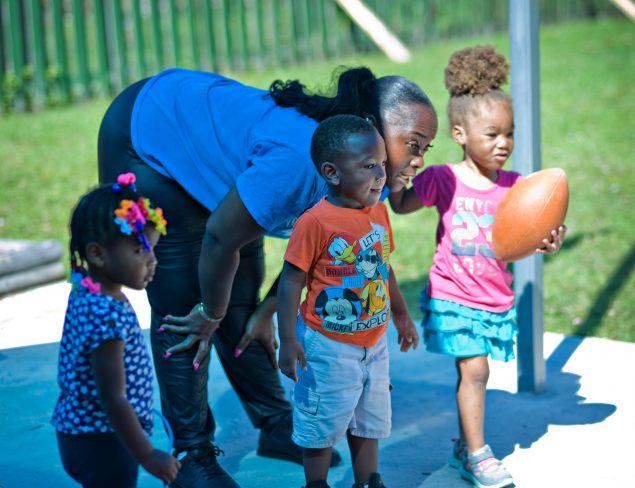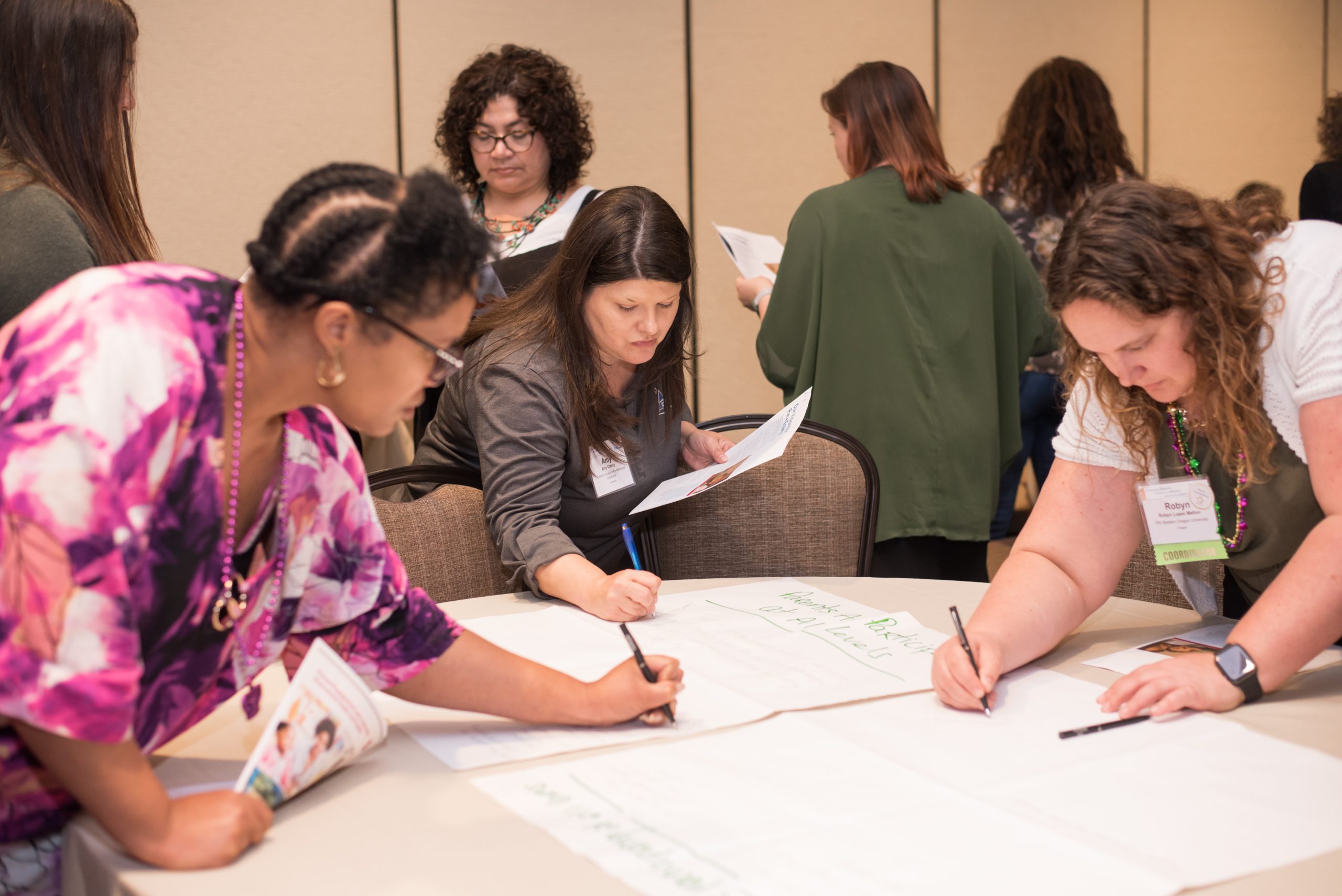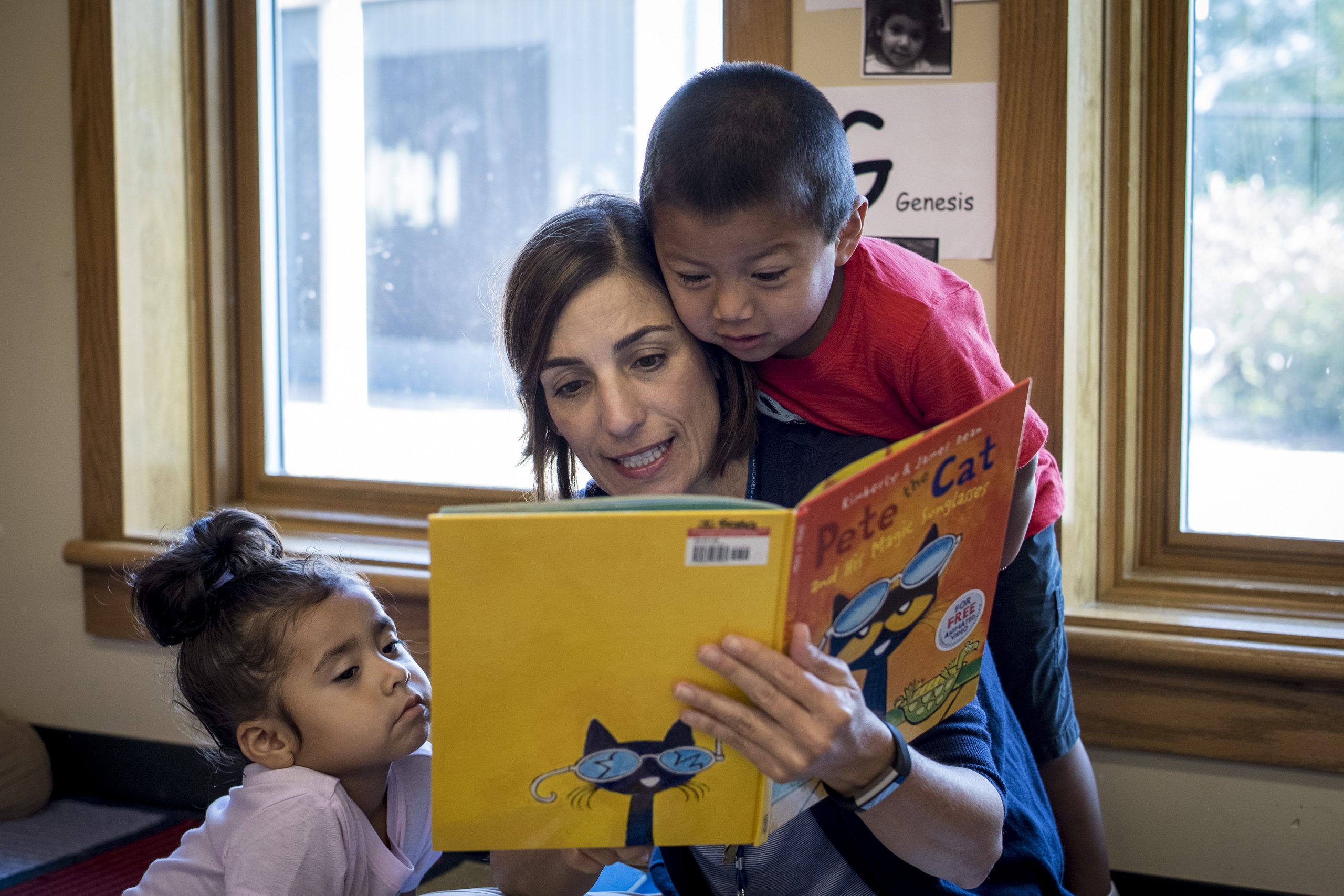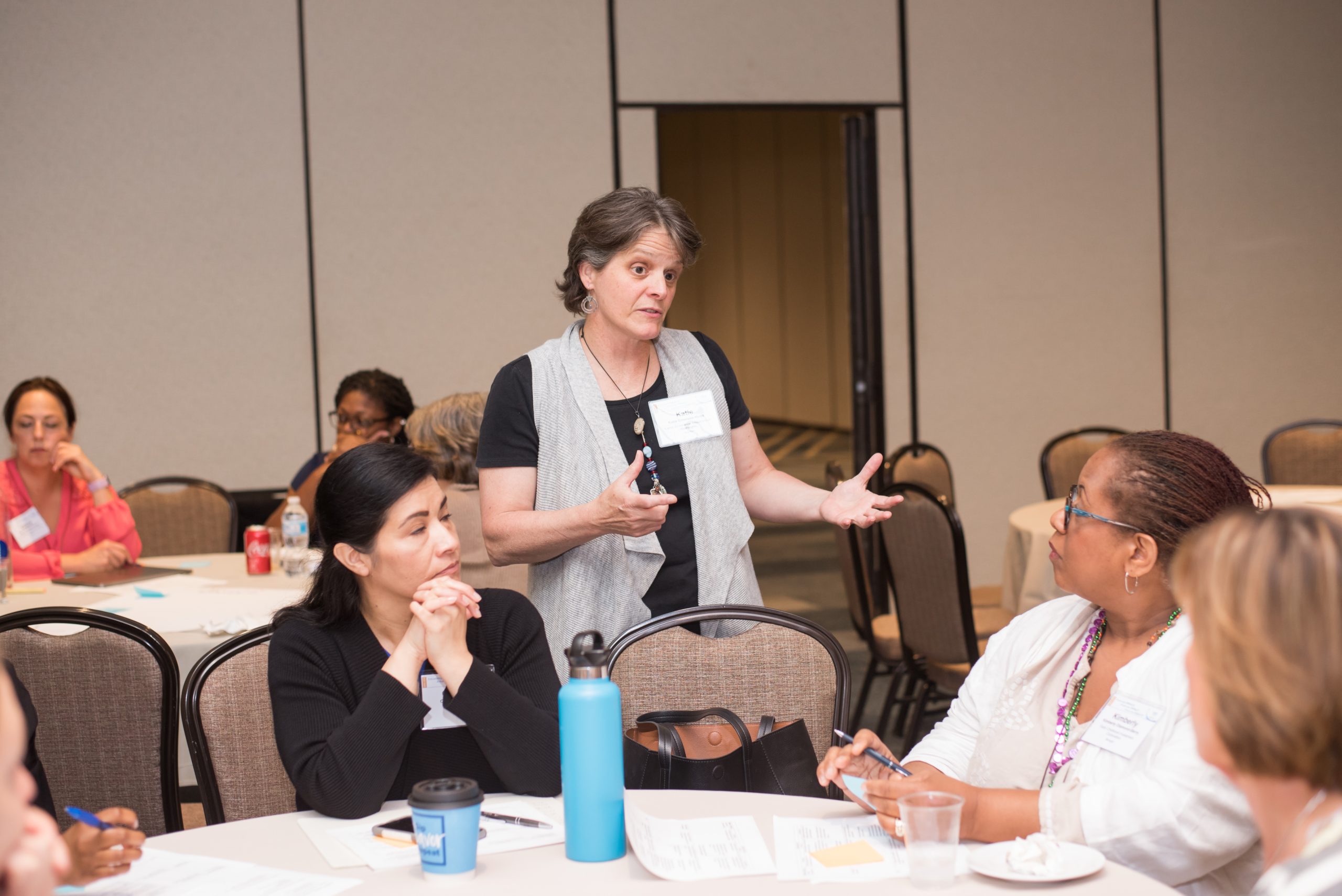
Early Care and Education Quality Initiatives
States and communities are working hard to improve the quality of existing child care and to create additional quality care. BUILD works to support those efforts by highlighting promising models of quality improvement, facilitating peer exchanges, and helping leaders from different sectors think together about how to develop and sustain high-quality early learning, especially in the communities that have been historically marginalized.

What is High-Quality Care?
At their best, early care and education programs foster healthy development and prepare young children for future learning and life success. Research tells us a great deal about what “high quality” looks like, but it is complex and expensive to deliver fully on the elements of quality, particularly without the benefit of supports and infrastructure. In addition, state definitions of quality have often not considered—or adequately valued—family, community, and cultural context or definitions of quality.
Quality Rating and Improvement System (QRIS)
Federally-funded Head Start, Early Head Start, and some state Pre-K efforts offer a model of high quality. These programs promote school readiness for children in families from under resourced communities and have the comprehensive supports, built-in regulations, implementation requirements, and adequate funding to ensure that they deliver on their promise of quality. However, their reach is limited, and far too many families lack access to affordable, high-quality care for their children. Head Start is available to only 36 percent of eligible children and Early Head Start to only 11 percent of eligible children.
States and communities are working hard to improve the quality of existing care and create additional quality care to ensure that all families have access to the quality care and early learning opportunities that will support their children to thrive in the settings that best meet their needs. BUILD works to support those efforts by highlighting promising models of quality improvement—that promote language retention, for example—by facilitating peer exchanges, and by helping leaders from different sectors think together about what supports it takes to foster and sustain high quality early learning across a state, especially in the communities that have been historically marginalized.
One strategy states have used in the attempt to improve the quality of early care and education programs has been to create infrastructure to support quality through a Quality Rating and Improvement System (QRIS). QRIS emerged as a state-driven strategy largely in response to the gap between the minimum level of quality required by states to open and operate a child care program and the recognized level of quality that optimally supports child development and learning.
State leaders developed QRIS to assess, improve, and communicate about the quality of early education and care programs. The federal Race to the Top-Early Learning Challenge dramatically accelerated this strategy. Now almost every state has adopted some version of a QRIS in addition to other quality improvement strategies.
 QRIS as an Evolving Lever for Systems Change
QRIS as an Evolving Lever for Systems Change
From its inception, BUILD embraced the concept of QRIS as a lever for systems change and as a framework for early care and education quality improvement. Our vision was that QRIS could provide the infrastructure and impetus to align efforts to support healthy child development, and learning by aligning state efforts around core practices including:
- Engaging and being responsive to families’ needs and wants for their young children.
- Providing teachers with professional development opportunities and pathways to ongoing learning and improvement.
- Using program and practitioner standards aligned with state early learning standards to articulate research-based and best practices of high-quality programs.
- Deploying technical and financial assistance to ensure that programs and practitioners had the skills and resources to deliver high-quality services.
To secure funds and ensure accountability for the use of public dollars, rating and monitoring have been central to QRIS. The theory was that these QRIS elements help ensure that public funds are supporting programs that are of sufficient quality to contribute to healthy growth, development, and learning. Over the two decades of significant state focus on early care and education quality improvement efforts, child care quality has dramatically improved.
Nevertheless, many challenges exist with QRIS, some of which were baked in from the beginning. For example, the rating was meant to have two benefits: public funders would be assured that funds were being directed to high-quality programs, and families would be able to make informed choices when selecting a program for their child. In reality, distinctions between levels of quality can be difficult to discern—and not all elements of quality are universal truths.
Research demonstrates that the higher levels of a state quality continuum are better in several clear ways than at the lower levels. However, a program in an old building without the benefits of a space designed with young children in mind might do poorly on the Environment Rating Scale, but that shortfall might be offset by having experienced, nurturing teachers. Furthermore, family choice and family experience of quality is complicated by numerous considerations including hours of operation, languages spoken by the teachers and administrators, and convenience to home. When QRIS were promoted in the early years, leaders implied that families had choices, which is often not the case.
Accountability often has seemed more important in QRIS than improvement. In some cases, the zest for accountability led to overly structured, burdensome processes where the ‘why’ of the work was overshadowed by a ‘check it off the list’ mentality. Additionally, funding for the system has been insufficient to support the program and practitioner advances necessary for significant improvement in most states. States have focused on accountability and quality ratings without sufficient funds to cover the true cost of quality including living wages for early care and education providers, professional development, adequate facilities, and comprehensive services.
 Don’t just Rebuild…
Don’t just Rebuild…
Reinvent, Reinvision.
The most recent racial reckoning has helped federal and state leaders recognize the ongoing unequal opportunities available to young children of color and their families in the US. As states spend federal relief dollars and rebuild their economies, we all have the opportunity and responsibility to create more inclusive planning discussions and develop approaches to state early care and education systems that allocate resources equitable and build shared leadership and collective power.
Some states have taken steps, such as redefining the R in QRIS to mean “recognition” rather than “rating” as they strive for a more strength-based approach. States are further moving to a continuous quality improvement focus in partnership with providers and practitioners with families and children at the center of the efforts.

Visit the Quality Compendium
The quality compendium is a catalog and comparison of quality initiatives like Quality Rating and Improvement Systems (QRIS) to promote thoughtful design, analysis, and quality improvement in early care and education system building.
 How BUILD Provides Support
How BUILD Provides Support
BUILD’s learning community offers vibrant, interactive events such as the annual BUILD Quality Improvement Conference that has grown to become one of the premier early childhood gatherings in the field. Typically attended by more than 1,200 leaders from around the country, participants represent all aspects of the early childhood field, including child care administrators, technical assistance providers, researchers, local and state government leaders, advocates, national experts, and systems builders of all kinds. The conference delivers a curriculum focused on early care and education quality improvement in the context of comprehensive, equitable systems building.
We also offer regular webinars, peer learning tables, and communities of practice on a wide range of issues related to early childhood quality.
The BUILD staff and its network of consultants offer states individualized technical assistance to support planning, strategic improvements, address implementation challenges, and leadership development. We strive to help state leaders see beyond past practice and available resources and develop strategies that will lead to their vision of more equitable opportunities and outcomes for young children and their families.
BUILD’s Quality Improvement System Goals:

- Create equitable, high-quality early childhood systems.
- Help state leaders and advocates redesign early care and education programs and services to focus on family-centered systems that address disparities and tailor supports to marginalized communities and families with young children.
- Create and facilitate a vibrant community of state leaders dedicated to sharing best practices and innovations about all aspects of the development, implementation, and improvement of quality improvement systems.
- Create opportunities for state leaders to participate in intensive and ongoing learning opportunities, such as think tanks and communities of practice, to foster innovation and build quality improvement systems that are equitable.
- Help state leaders acknowledge that quality can look different in different programs and help them support quality improvement efforts that not only represent the promising practices in the field, but also incorporate the vision, culture, and priorities of the program, its community, and the families it serves.
Early Care and Education Quality Improvement Benefits and Accomplishments
Through our learning community and technical assistance, BUILD has helped many states with their quality improvement effort.
For lasting and substantive change, we need to help build early childhood movement leadership at all levels, from home-based care providers to state agency department heads, that:
- Reflects the racial and ethnic diversity of our young child population.
- Understands systems barriers to equity and levers for change.
- Sees how to take action within one’s own roles and areas of responsibility and influence.
- Reimagines and builds early childhood systems that place priority on the needs of marginalized families and under-resourced communities.
BUILD has helped states see that their Quality Improvement Systems can be part of a broader strategy for a comprehensive and equitable early childhood system in which all the state’s children have access to care and learning accompanied by health/mental health supports, social support, and family engagement, as needed. Quality Improvement System building is an early learning strategy that shares responsibility for equitable child outcomes with other early learning strategies as well as with other systems such as health and education, and with communities and families.
Explore Early Care and Education Quality Resources
Philadelphia’s Early Learning Community Speaks Out: An Action Plan for Quality Improvement
Report June 1, 2021
This report explores opportunities to further develop and improve a system of quality improvement and supports in Philadelphia. Based on input from more than 300 early childhood providers, 16 quality improvement organizations, and four public and private funders, the report offers 17 recommendations for quality improvement.
Start with Equity: Advancing Equity in Early Care and Education Systems with the American Rescue Plan Act
Report June 1, 2020
This report reviews concrete ways to invest in early care and education systems ensuring equitable access, experiences, and outcomes for all young children. It can be a tool to support states and tribes in building a pathway towards stronger, higher-quality, more equitable systems.
Start with Equity 14 Priorities to Dismantle Systemic Racism in Early Care and Education
Report December 1, 2020
This resource names 14 critical priorities to advance equity in the early childhood education system. It provides a policy agenda that serves as an actionable roadmap with specific recommendations to help federal and state policymakers, paired with the work of families and advocates, move the field closer to realizing racial equity for our youngest children.
Explore Early Care and Education Quality Collection
Early Care and Education Quality Initiatives Team
Debi Mathias
Director of Early Care and Education Quality Initiatives

